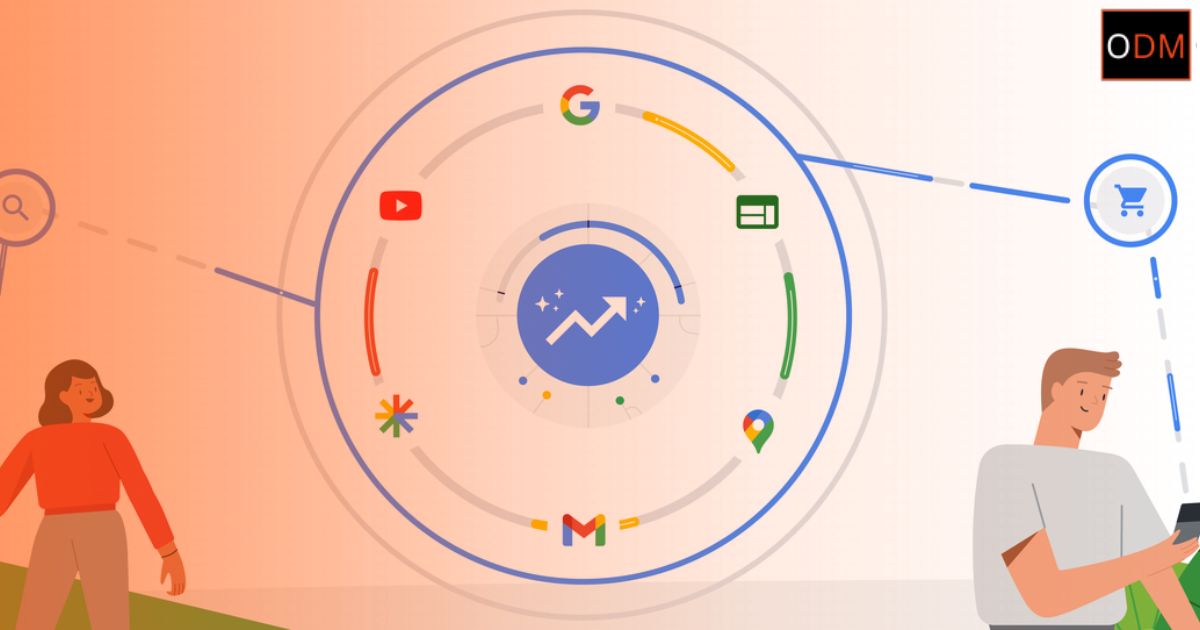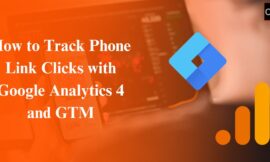Google Performance Max Campaigns are changing the way businesses run paid ads. Unlike traditional campaign types where you choose specific placements, with Google Performance Max Campaigns, you give Google your assets, goals, and audience signals and it takes care of the rest. It’s a campaign type designed for performance across all of Google’s channels including Search, Display, YouTube, Discover, Gmail & Maps. For businesses using Online dot Marketing services, this is an opportunity to scale visibility and conversions like never before.
What are Google Performance Max Campaigns?
Google Performance Max Campaigns (also called PMax) are automated campaigns that work using machine learning. They aim to show your ads to the right people, in the right place, at the right time. Instead of manually managing each campaign type, you feed Google your best creative assets & goals and let its algorithm do the work.
Why Google Introduced Performance Max Campaigns?
The main reason for introducing Google Performance Max Campaigns is to simplify the advertising process. Many advertisers struggled with managing multiple campaign types Search, Display, YouTube, and so on. Google Performance Max Campaigns bring all of these under one roof.
Some reasons:
- Easy asset management
- All-in-one campaign across channels
- Optimization using machine learning
- Enhanced audience targeting using signals
- Better budget utilization
Benefits of Performance Max Campaigns
Google Performance Max Campaigns offer a smart way to simplify and scale your advertising. With access to all of Google’s platforms, including Search, YouTube, Display & more, these campaigns help increase reach, automate optimization, and save time. The campaign adapts automatically to your business goal, whether that’s driving online sales, getting leads, or boosting local visits. With machine learning and asset testing, your ads become more effective over time, improving overall ROI.
Here are some key benefits:
- Reach expansion: Your ads appear across Google’s entire inventory
- Performance optimization: Machine learning chooses the best combination of assets
- Time-saving: You don’t need to manage multiple campaigns
- Goal-focused: Whether your goal is sales, leads, or visits, it adapts
Google Performance Max Campaigns vs Traditional Campaigns
| Feature | Google Performance Max Campaigns | Traditional Campaigns |
|---|---|---|
| Channels | All Google platforms | One at a time |
| Management | Automated | Manual |
| Audience Targeting | Smart automation | Manual setup |
| Reporting | Asset & audience-level | Campaign-level only |
How to create Performance Max Campaigns?
Creating a Google Performance Max Campaign is easier than managing multiple campaigns.
Here’s how to create Performance Max Campaigns step-by-step without complications:
- Log in to your Google Ads account
- Click on “+ New Campaign”
- Select your goal (sales, leads, local visits, etc.)
- Choose “Performance Max”
- Add your budget & bidding strategy
- Input creative assets (images, videos, headlines, descriptions)
- Provide audience signals
- Set location, language, and other settings
- Review & launch
Best Practices for Google Performance Max Campaigns
Some quick best practices when setting up Google Performance Max Campaigns:
- Use high-quality images & videos
- Keep headlines short & impactful
- Add strong audience signals (custom segments, 1st party data)
- Monitor asset performance regularly
- Avoid overlapping campaigns (e.g., the same product in shopping + PMax)
How Google Performance Max Campaigns Work Technically?
On the backend, Google Performance Max Campaigns work using machine learning and smart automation. You give the system signals like which audience to target, what assets to show, and what your goal is. Then Google’s algorithms start testing different asset combinations to find what works.
Each time a user interacts with a Google property (YouTube, Maps, etc.), Google matches that behavior with your campaign’s signals.
It’s a learning process, so it keeps getting better over time. Google Performance Max Campaigns become more efficient as they gather more data.
Google Performance Max Campaigns for E-commerce Businesses
E-commerce brands love Google Performance Max Campaigns because it simplifies product promotion across multiple platforms without having to create separate campaigns.
For example, if you’re running an online store using some tools, you can connect your product feed, and Google Performance Max Campaigns will handle everything from showcasing your product on YouTube shorts to Search results.
Benefits include:
- Smart Shopping experience
- Full channel visibility
- Product-level reporting
- Audience intent targeting
Google Performance Max Campaigns Tips for Better ROI
Online dot Marketing helps businesses implement these tips for better campaign results. To get better ROI from Google Performance Max Campaigns, use these tips:
- Start with a clear goal (Sales, Calls, Leads)
- Set a reasonable budget & give time to optimize
- Keep assets updated every 30 days
- Use high-quality product feeds (for eCommerce)
- Track conversions correctly
Mistakes to Avoid with Google Performance Max Campaigns
Avoid these if you want your Google Performance Max Campaigns to succeed. Many advertisers fail because they skip basics. Some common mistakes to avoid:
- No proper audience signals
- Poor-quality creative assets
- Not monitoring asset group performance
- Overlapping campaigns causing competition
- Unrealistic expectations in the early phase
How to Track Performance in Google Performance Max Campaigns
One of the trickiest things is understanding how your Google Performance Max Campaigns are doing. You can use the “Insights” section in Google Ads to view data like:
- Top-performing asset combinations
- Audience Insights
- Geo-location stats
- Device usage data
Also Read – How to Check for Google Penalties on Your Website
Audience Signals in Google Performance Max Campaigns
Audience signals are optional, but they help Google understand who you want to reach. In Google Performance Max Campaigns, you can add:
- Custom segments
- Website Visitors
- YouTube viewers
- Customer match lists
Read Also – How to Grow Social Media Followers for Your Business
Google Performance Max Campaigns in Local Businesses
Google Performance Max Campaigns also work great for local businesses. Let’s say you’re a local salon or home service brand; you can still run campaigns targeting your city or PIN code. With Online dot Marketing, even small businesses can run powerful local campaigns using Google Performance Max Campaigns.
They help you:
- Get more calls & visits
- Show up in Maps
- Be visible on YouTube for local users
When Should You Use Google Performance Max Campaigns?
You should consider Google Performance Max Campaigns if:
- You want a single campaign across all Google platforms
- You’re new to Google Ads
- You have limited time to manage ads
- You have enough creative assets ready
- You want Google’s AI to help you scale
When You Shouldn’t Use Google Performance Max Campaigns
Avoid using Google Performance Max Campaigns if:
- You want granular control over placement
- You’re testing ad creatives individually
- You’re running hyper-niche ads with very small audiences
Google Performance Max Campaigns are a great way to simplify your Google Ads strategy. They are useful for both small businesses and large-scale advertisers. Whether you are running an online store or want to generate leads for your business, Performance Max can be a smart tool. At Online dot Marketing, we help you build, launch & manage these campaigns with the right strategy, audience signals, and creative assets.
If you’re still wondering how to create Performance Max Campaigns or what the real Benefit of Performance Max Campaigns is, now you have all the answers.
Start using Google Performance Max Campaigns today & reach more customers where they already are!
Google Performance Max Campaigns FAQs
Are Google Performance Max Campaigns good for B2B?
Yes, Google Performance Max Campaigns can work well for B2B businesses, especially when there are high-quality creative assets and a clear goal. These campaigns use automation and audience signals to reach decision-makers across platforms like Search, YouTube, and Gmail. While B2B targeting is usually more niche, using Customer Match and remarketing lists can help improve reach. You don’t get placement-level control, but the system optimizes performance based on conversions. If you’re using lead generation forms, call tracking, or custom segments, Performance Max can help generate quality leads with less manual management.
Can I run only YouTube ads using Performance Max?
No, Google Performance Max Campaigns do not allow you to run ads exclusively on YouTube. These campaigns are designed to distribute your ads across all Google channels — Search, Display, Gmail, Discover, Maps, and YouTube. While you can add video assets to increase YouTube exposure, you can't restrict the campaign to a single channel. If your goal is to advertise only on YouTube, it's better to create a standard YouTube campaign instead. Performance Max is ideal when you want broader reach and are okay with Google deciding the placements automatically based on performance.
Can I see asset-level performance in reports?
Yes, Google Performance Max Campaigns provide asset-level insights under the asset group reporting tab. Although detailed metrics like CTR or conversions aren’t shown for each asset, Google uses performance ratings like “Low,” “Good,” or “Best” to help you understand which creatives perform better. This allows you to remove underperforming assets and test new variations. It's a simplified view but still useful for ongoing optimizations. For more precise tracking, connect your campaign with GA4. Regularly checking these insights helps in keeping your campaign fresh and improving your ad performance over time.
Do I need to upload a video for Google Performance Max Campaigns?
Uploading a video is not mandatory, but it’s highly recommended. If you don’t provide one, Google might auto-generate a basic video using your existing assets — which usually doesn’t look professional. A well-made video gives you better control over brand presentation and often improves campaign performance, especially on YouTube. Videos increase engagement, and platforms like YouTube Shorts and Discover benefit from them. If you want to stand out and get better results, include at least one landscape and one portrait video. This ensures broader reach and better placement quality across all channels.
How long does it take to see results from Google Performance Max Campaigns?
Google Performance Max Campaigns usually take 2 to 4 weeks to start delivering stable results. This initial period is called the learning phase, where Google tests your assets and audience signals to optimize for the best performance. During this phase, performance may fluctuate, so avoid making major changes. Once Google collects enough data, your campaign starts performing more consistently. It's important to track meaningful conversions and ensure your goals are set correctly. Patience during the early days leads to better results. Monitoring insights weekly helps improve performance gradually.
Can I use remarketing in Google Performance Max Campaigns?
Yes, remarketing is supported in Google Performance Max Campaigns. You can use audience signals like website visitors, customer match lists, or YouTube viewers. These help Google identify warm audiences and show them relevant ads across all platforms. Although you don’t have full control over where these users see your ads, Performance Max uses machine learning to blend remarketing with prospecting. Make sure your lists meet Google’s size requirements. Remarketing works well when you use strong creatives and limited-time offers. It's a smart way to re-engage people who’ve already interacted with your brand.
What kind of assets do I need for Google Performance Max Campaigns?
Google Performance Max Campaigns need a mix of creative assets to work effectively. You should upload headlines, descriptions, images, logos, and preferably videos. Make sure the images are clear and available in square, horizontal, and vertical formats. Videos help you get better placements on YouTube and Discover. Logos should follow Google Ads’ recommended size and resolution. Uploading multiple versions of each asset allows Google to test and optimize combinations for better results. Keep your assets updated every month. Strong assets make your campaign more engaging and help improve click-through and conversion rates.





